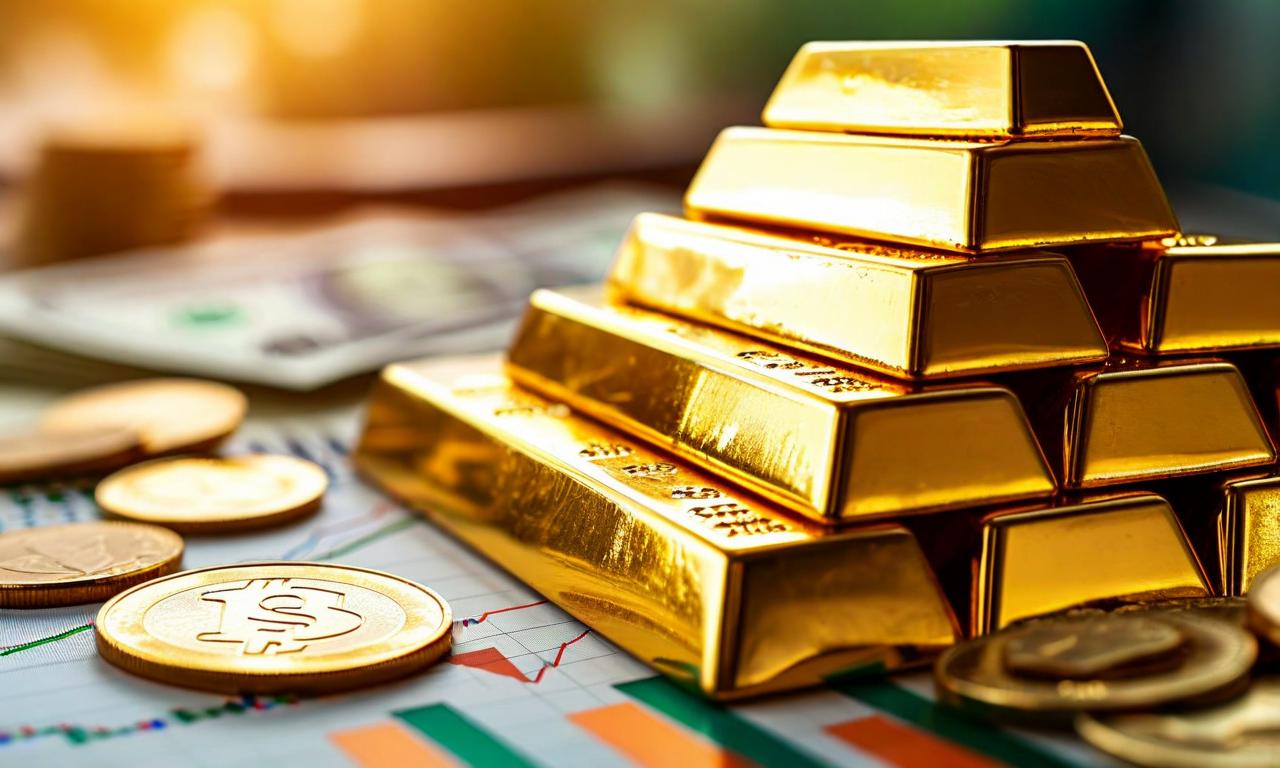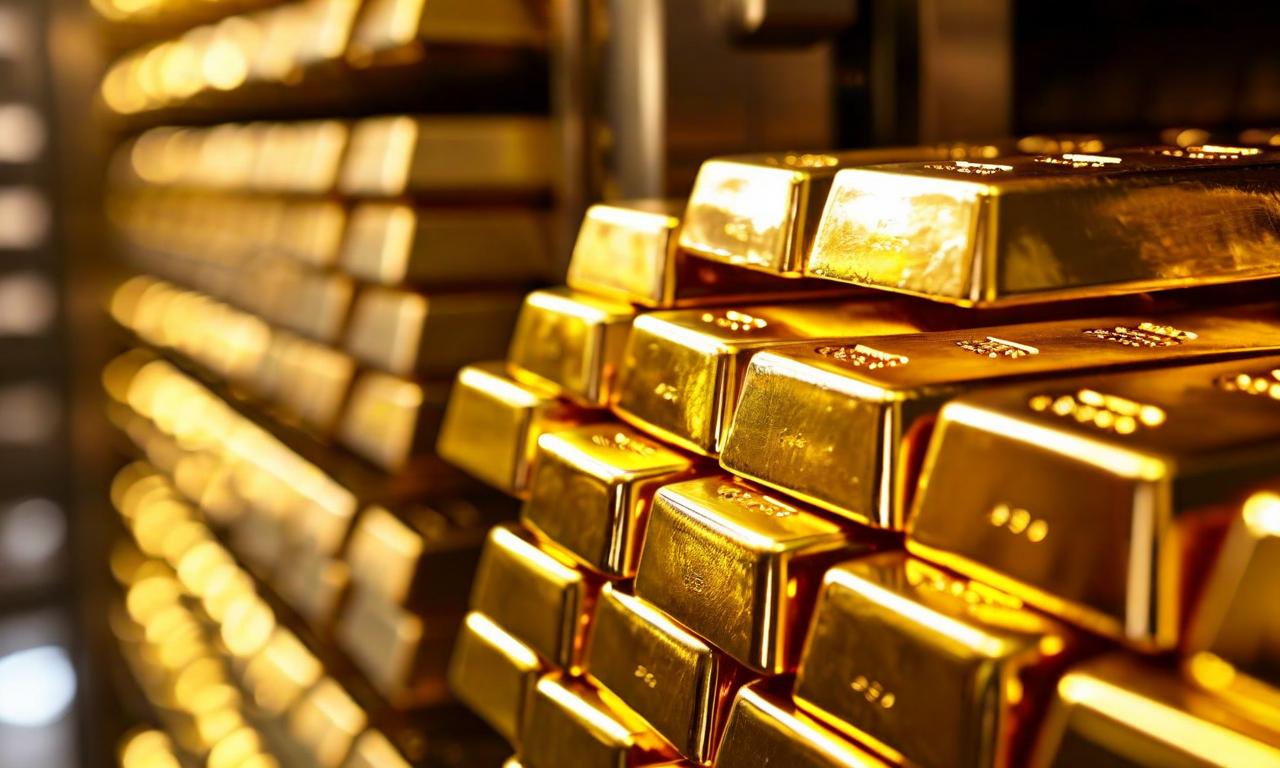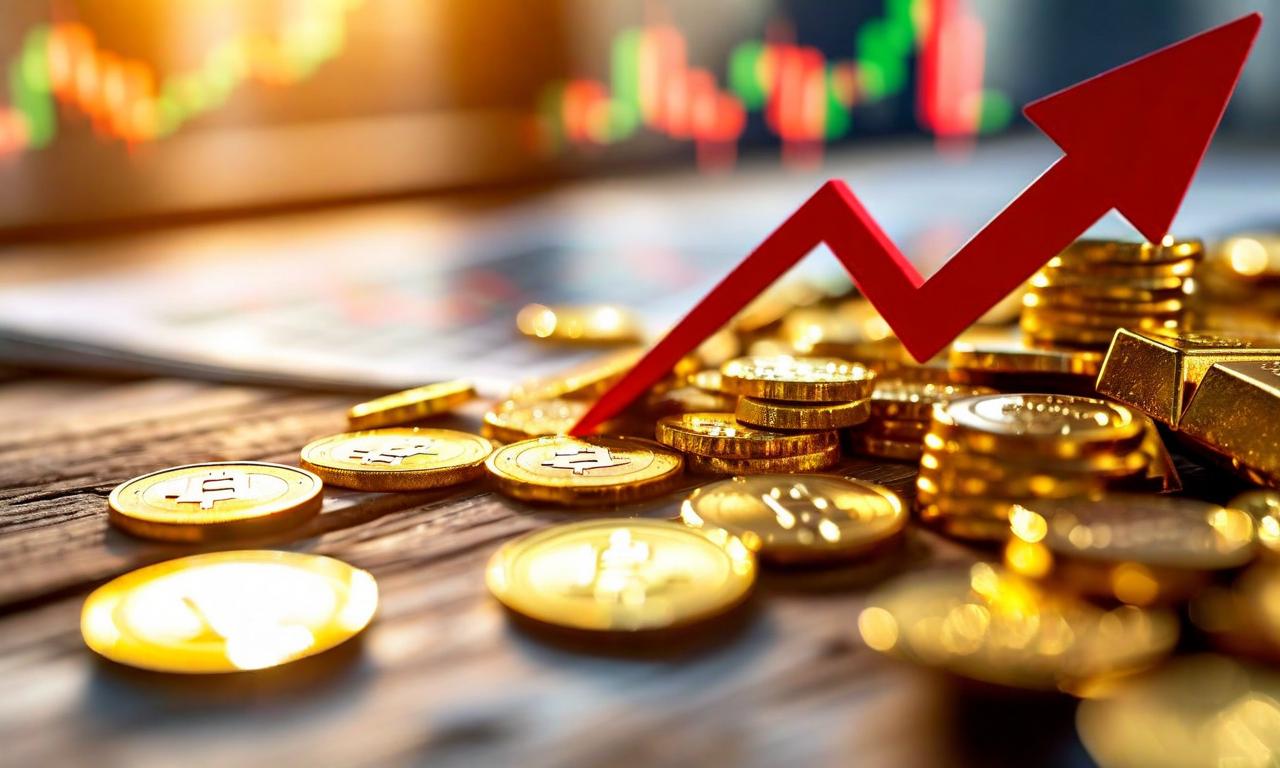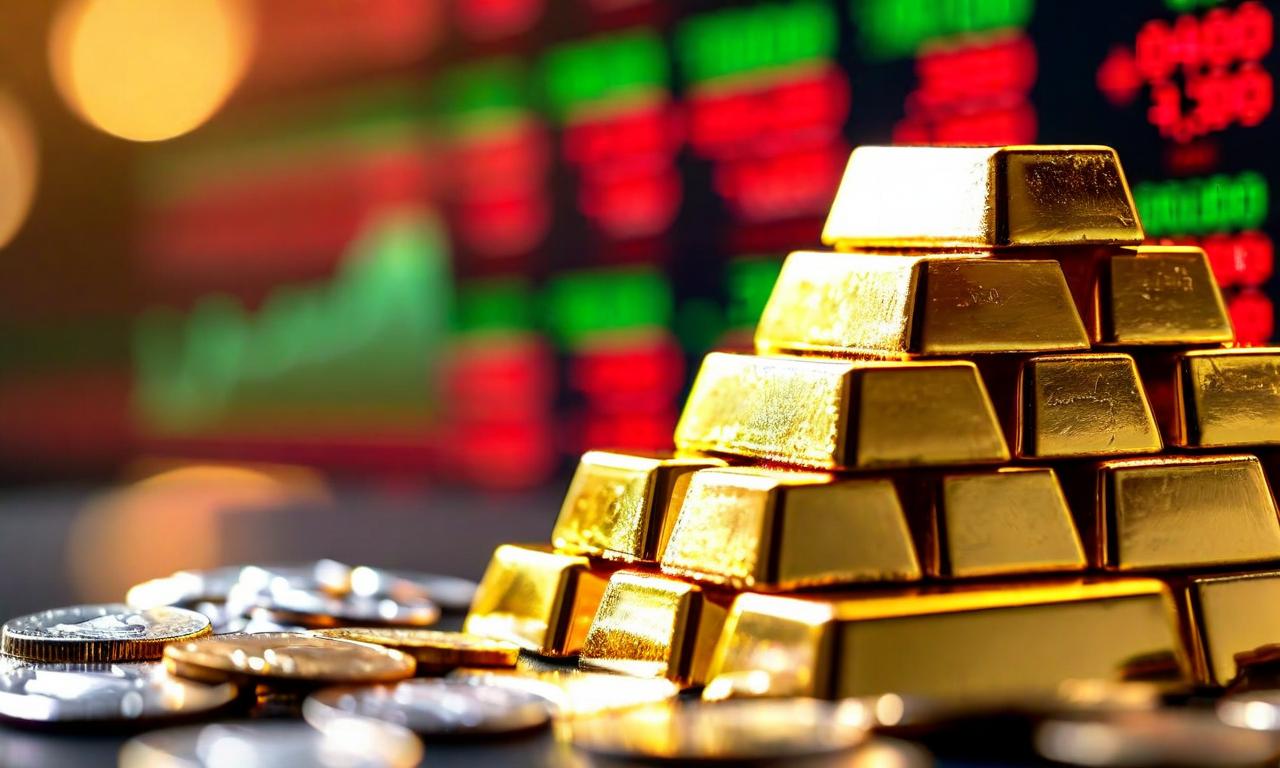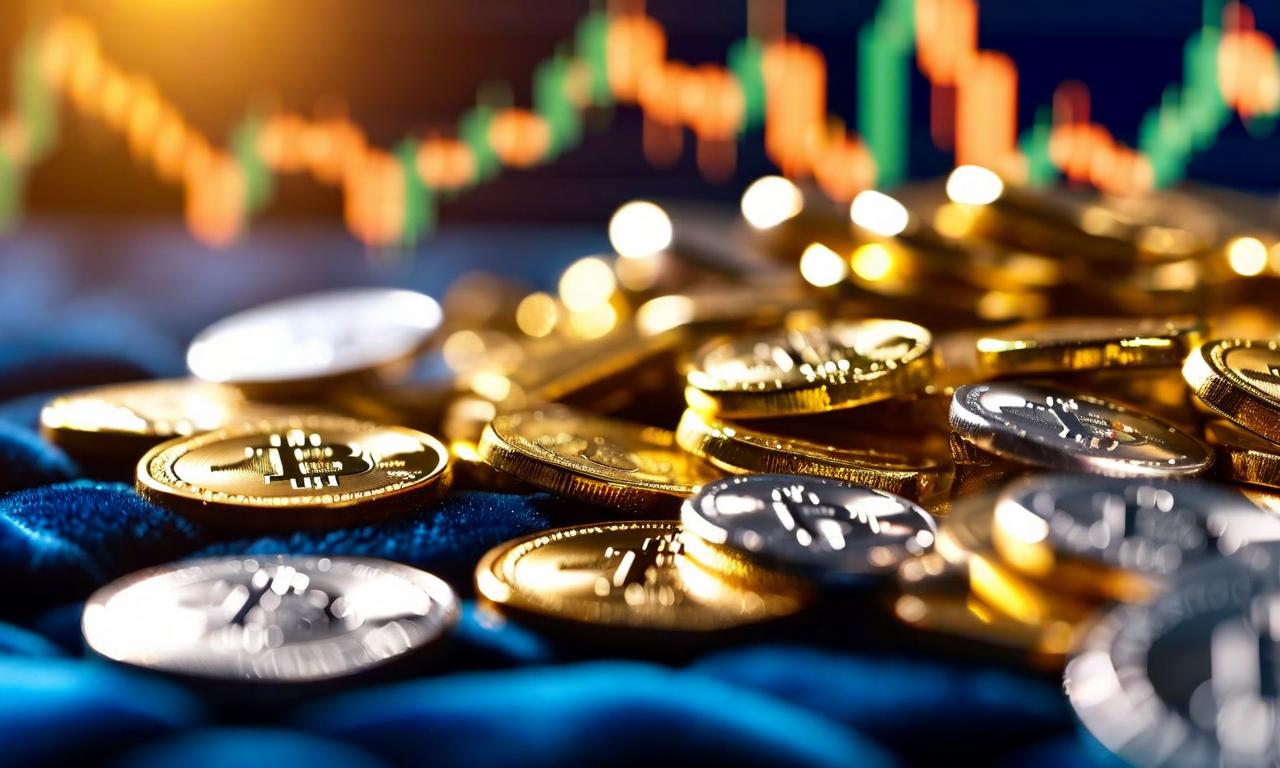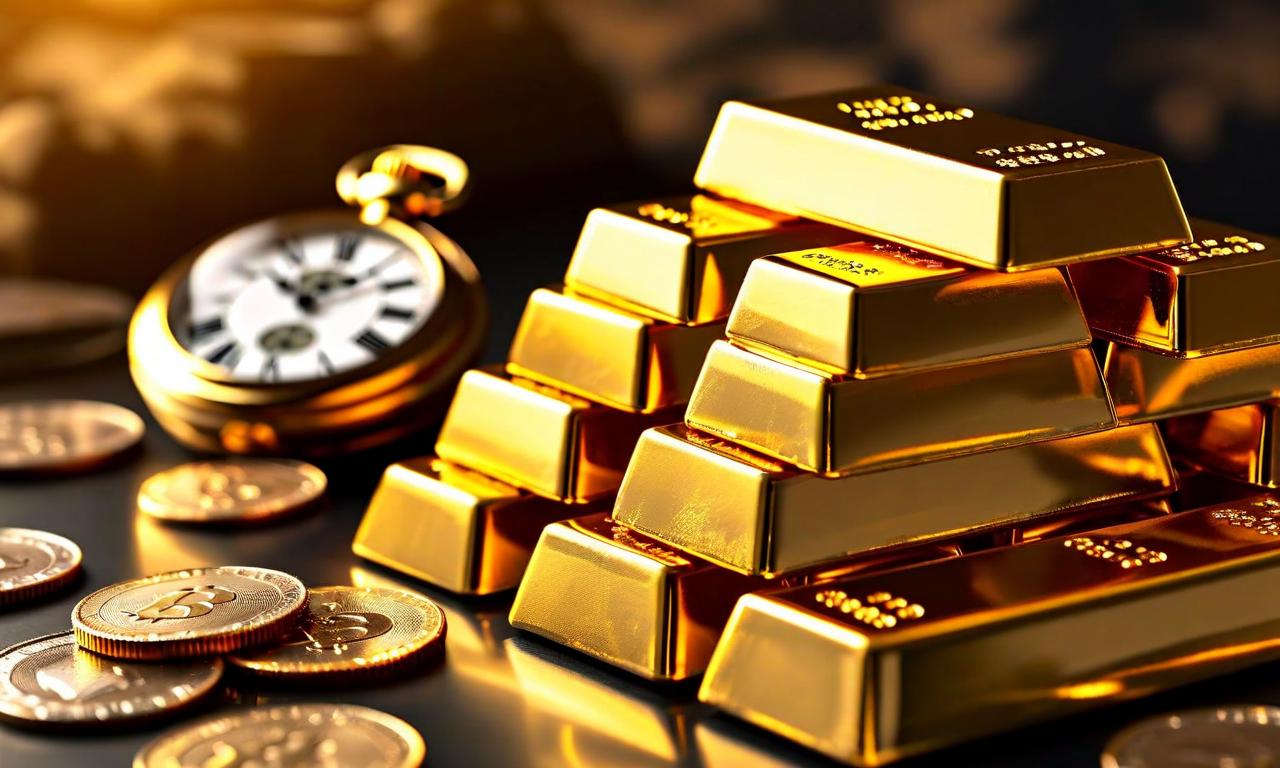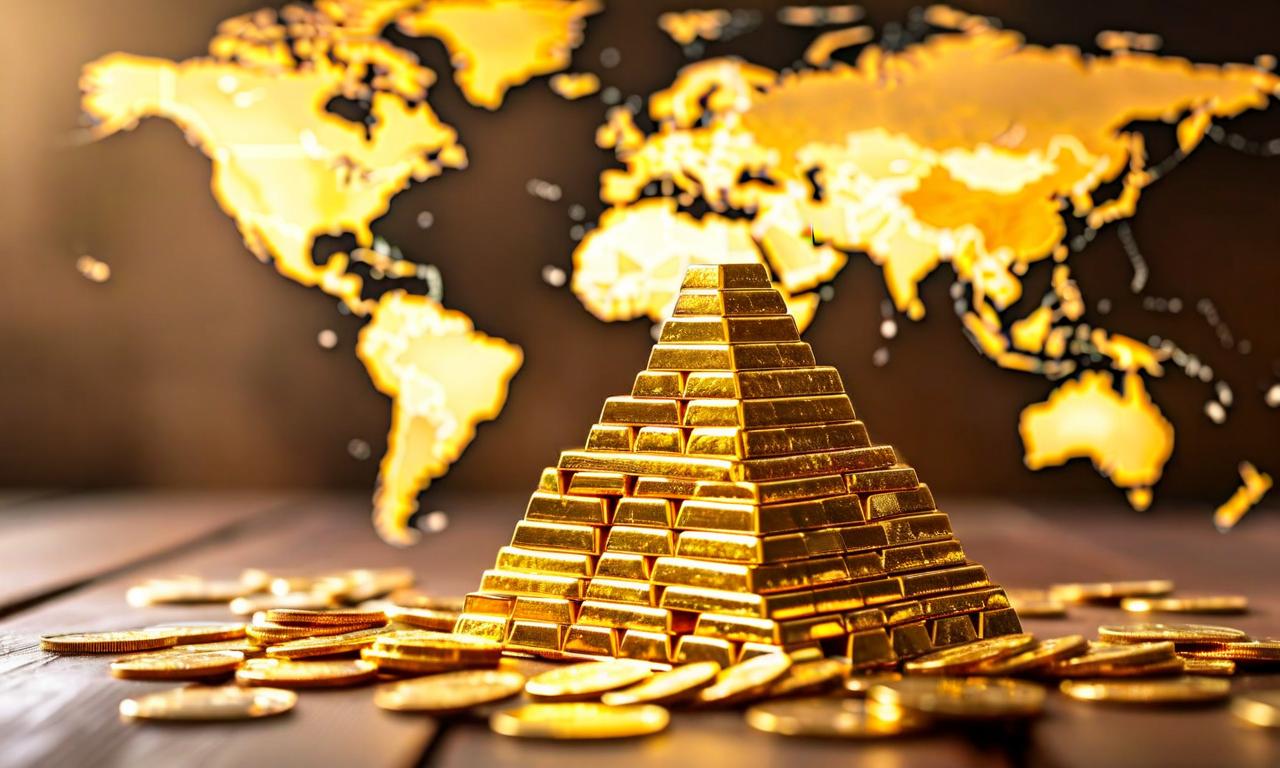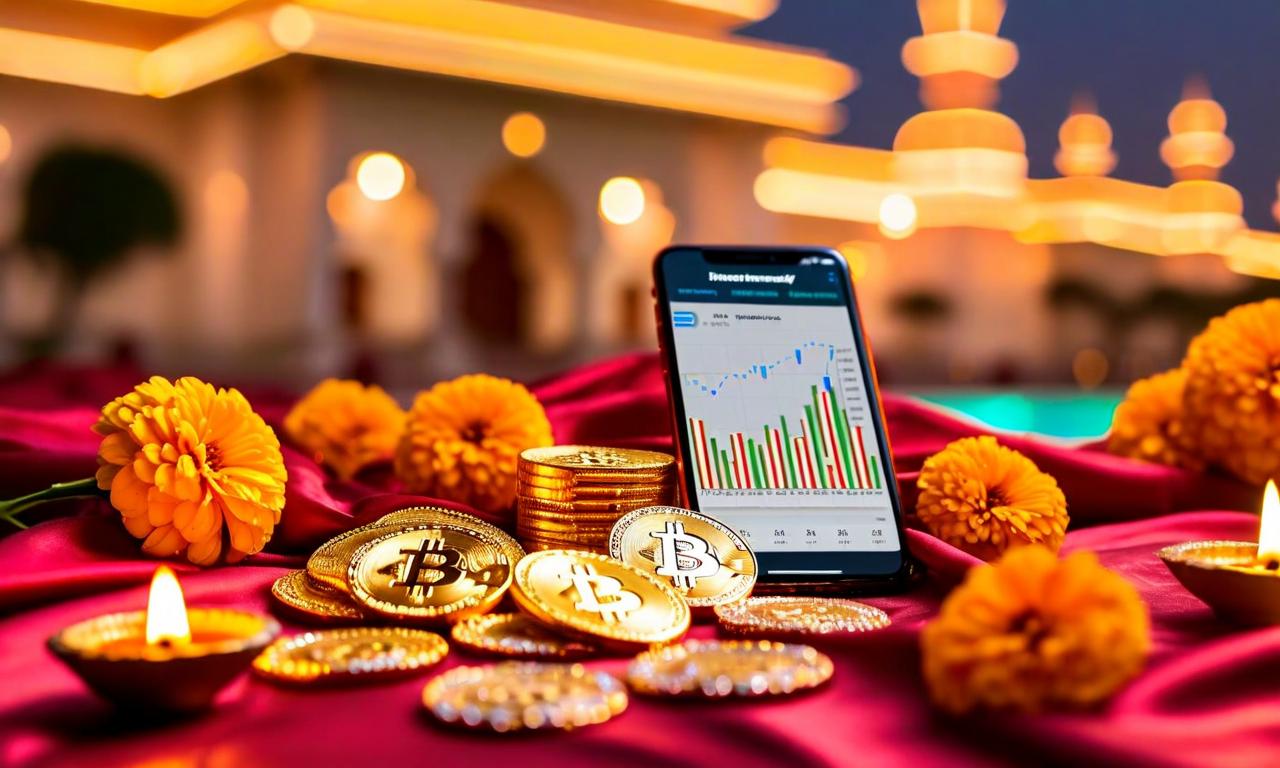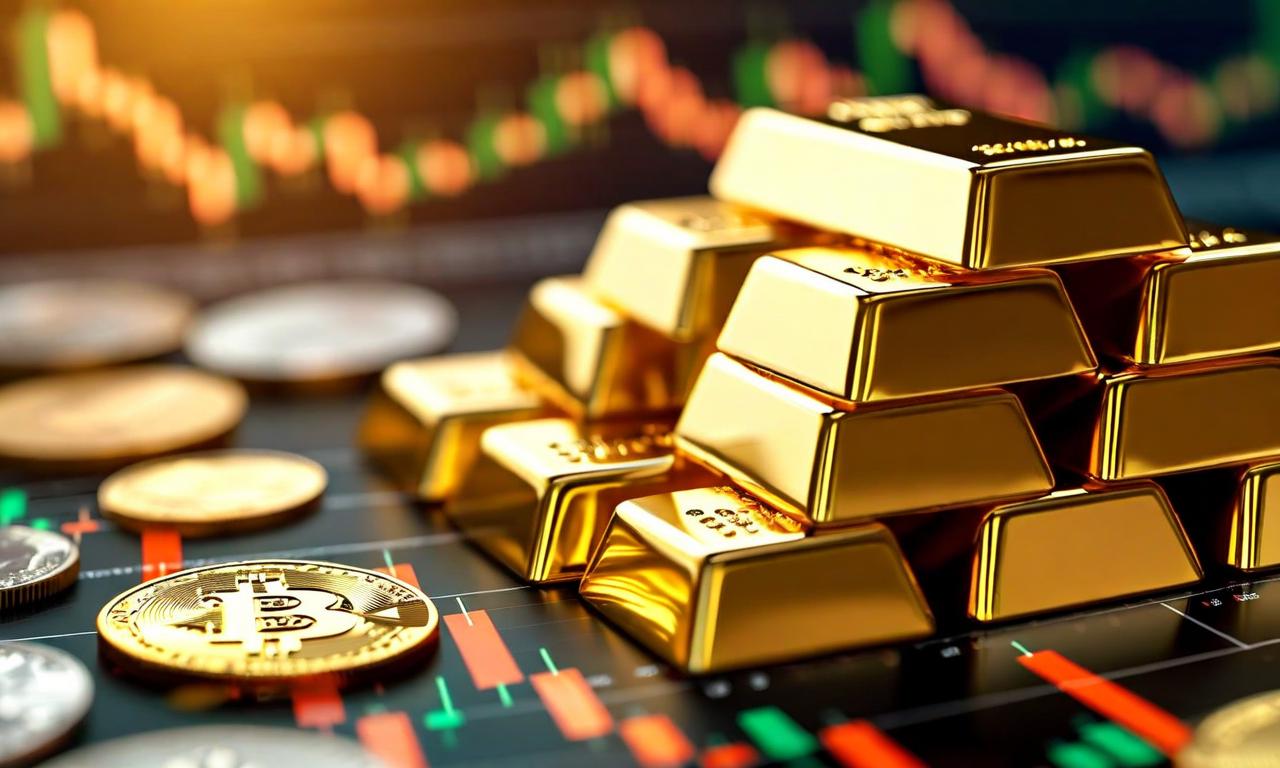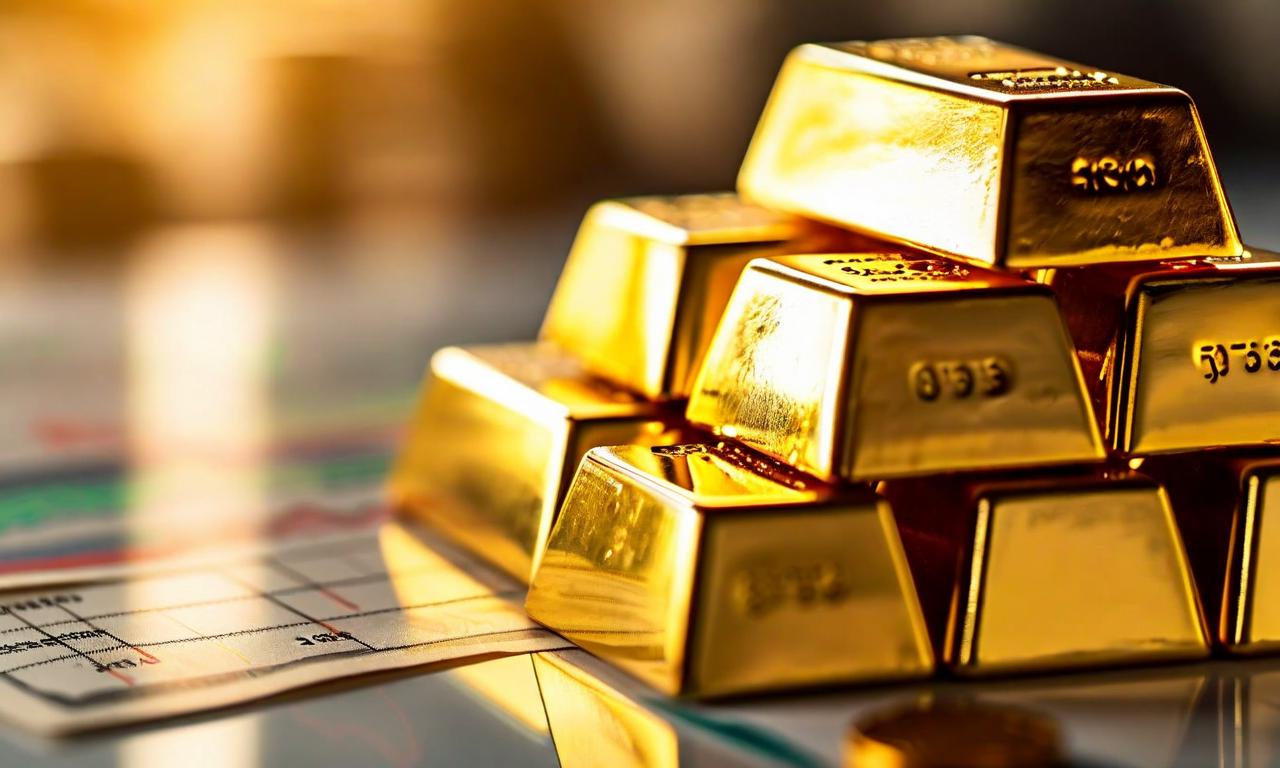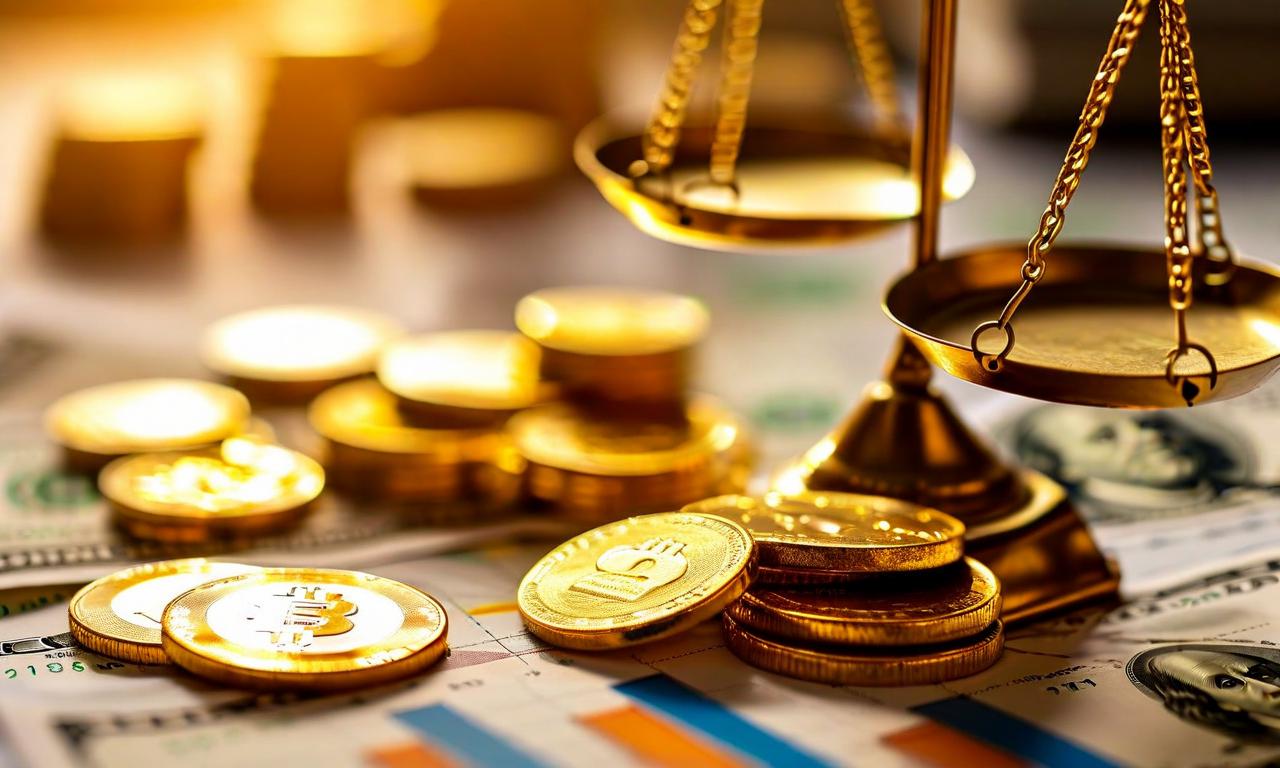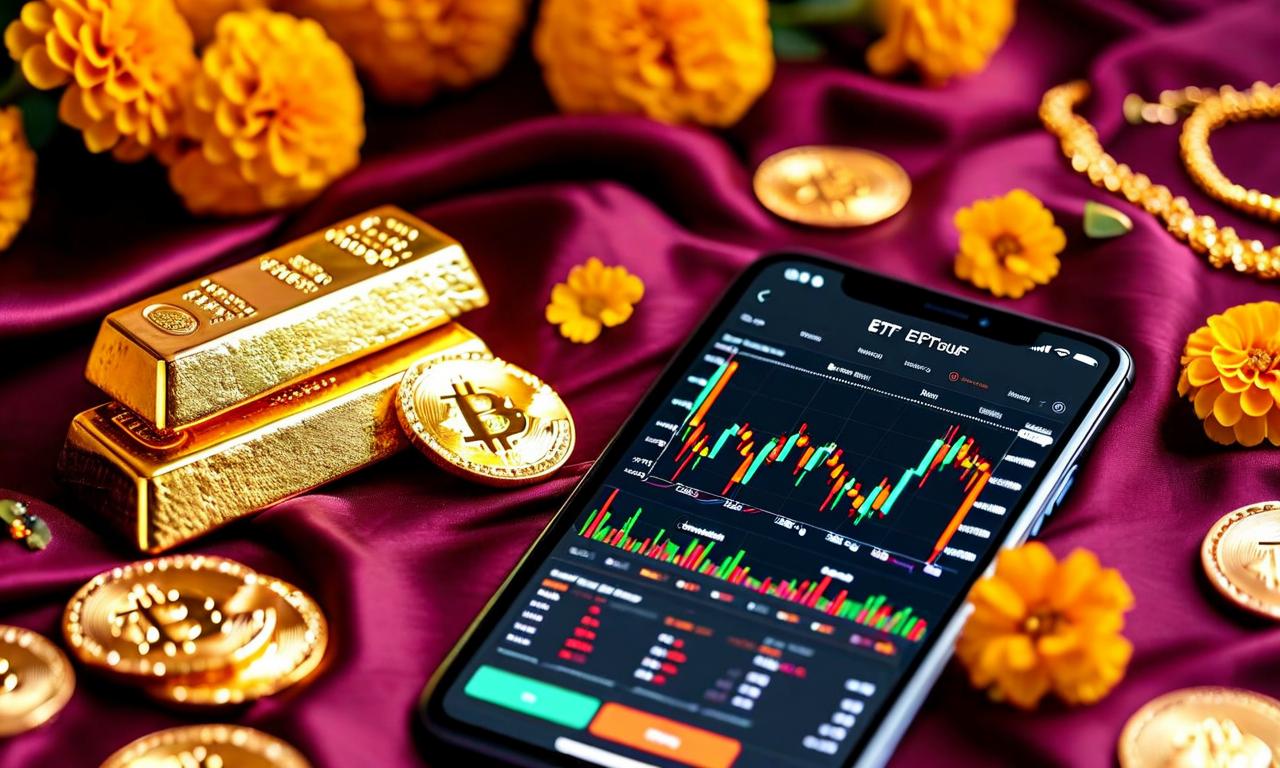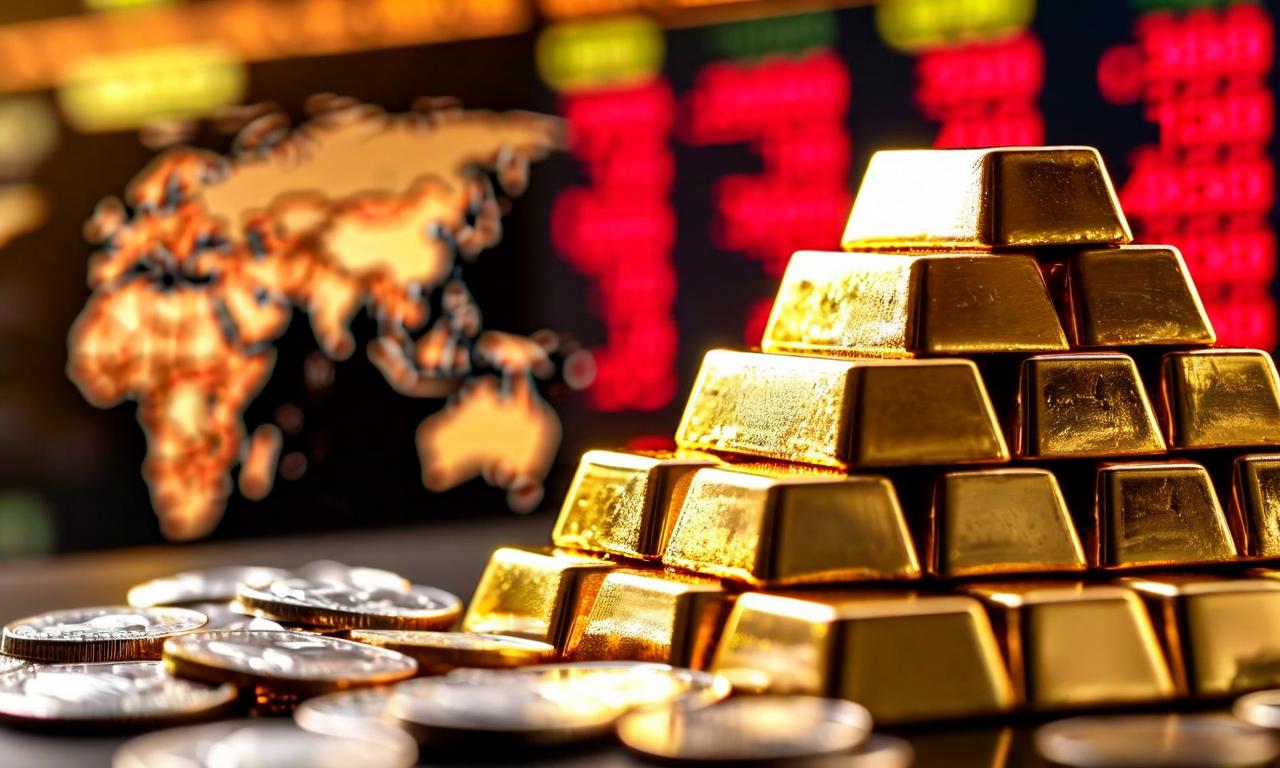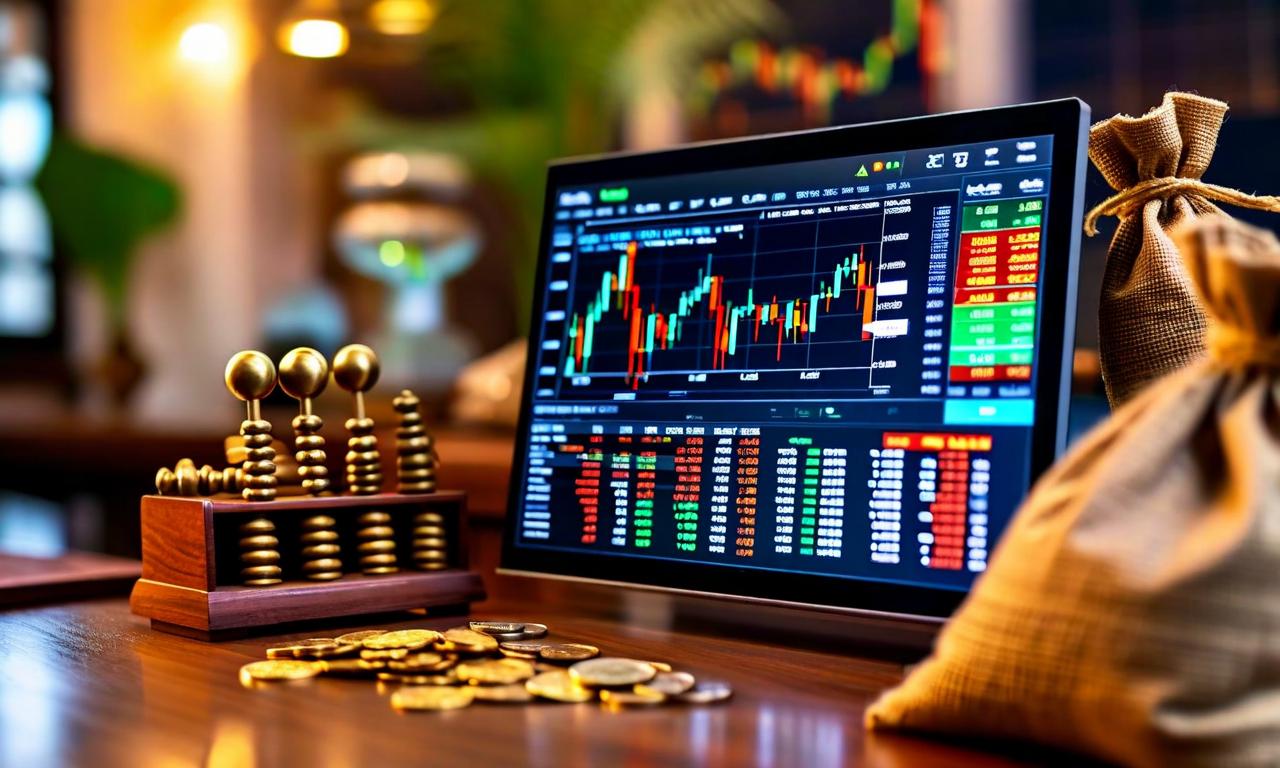Gold and Equities: Navigating Market Trends Amid Profit Booking and Dollar Concerns
Gold futures for December delivery fell 0.43% on MCX, while spot gold rose 0.3% internationally but remained on track for its worst weekly performance since May. Silver futures also declined. Factors influencing gold prices include profit booking, anticipation of U.S. inflation data, and potential impacts of sanctions on Russian oil companies. Ray Dalio warned that sanctions could weaken the dollar and boost gold prices, while JP Morgan analysts maintain a bullish outlook on gold. The dollar index's rise to 99.04 is making gold more expensive for other currency holders.
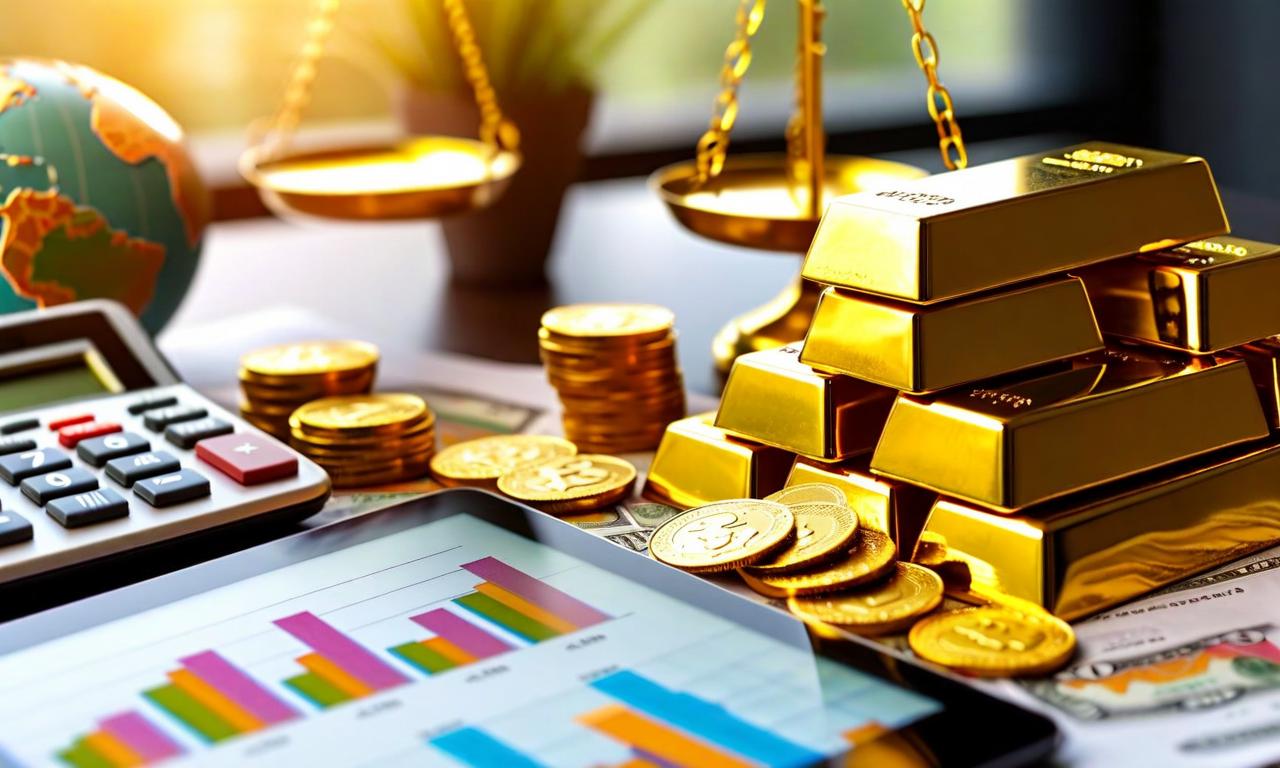
*this image is generated using AI for illustrative purposes only.
The Shifting Landscape of Investments
Investors have been closely watching the performance of two key asset classes: gold and equities. As global economic uncertainties persist, these two investment options have shown interesting trends that warrant attention.
Gold's Recent Performance
Gold, often considered a safe-haven asset, has demonstrated mixed performance recently. On Friday, gold futures for December delivery fell Rs 533 or 0.43% to Rs 1,23,571 per 10 grams on MCX. Internationally, spot gold climbed 0.3% to $4,138.52 per ounce but remained on track for its worst weekly performance since May, down nearly 2.7% for the week.
Factors influencing gold prices include:
- Profit booking after recent gains
- Mixed global cues
- Anticipation of key U.S. inflation data
- Potential impact of U.S. sanctions on Russian oil giants
Silver's Decline
Silver futures also experienced a decline, dropping Rs 1,386 or 0.93% to Rs 1,47,126 per kilogram.
Expert Insights on Gold and Currency
Billionaire investor Ray Dalio warned that U.S. sanctions on Russia's oil giants Rosneft and Lukoil could trigger global financial ripples. He stated that sanctions historically reduce demand for fiat currencies and support gold, potentially weakening the dollar and boosting gold prices.
JP Morgan analysts maintained a bullish stance on gold, forecasting prices could average $5,055 per ounce by the fourth quarter of 2026.
Currency Impact
The dollar index gained to 99.04, making gold more expensive for other currency holders. This movement in currency markets plays a crucial role in determining gold's attractiveness to international investors.
Equities: A Mixed Bag
While specific information on equities is not provided, it's important to note that equity markets often react to the same economic factors that influence gold prices. Investors may consider:
- Developed Markets: Major indices' performance in light of inflation data and potential Federal Reserve actions.
- Emerging Markets: The impact of global economic trends on countries like India.
- Sector-specific Performance: How different sectors might respond to economic uncertainties and currency fluctuations.
The Balancing Act for Investors
Given these trends, investors are faced with the challenge of balancing their portfolios. Key considerations include:
- Diversification: Allocating assets across both gold and equities can help mitigate risks.
- Risk Tolerance: Individual risk appetite should guide the proportion of allocation to each asset class.
- Market Awareness: Staying informed about global economic indicators, including U.S. Consumer Price Index data and potential Federal Reserve rate decisions.
Looking Ahead
Investors may want to keep a close eye on several factors that could impact both gold and equity markets:
- Central bank policies, particularly potential Federal Reserve rate decisions
- Inflation trends, with focus on upcoming U.S. Consumer Price Index data
- Global economic recovery pace
- Geopolitical developments, especially regarding sanctions and their economic impacts
By staying informed and maintaining a balanced approach, investors can navigate these complex market dynamics more effectively.
Remember: While this article provides general insights, it's always advisable to consult with a financial advisor for personalized investment strategies.
